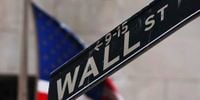Wall Street kicked off the week of September 22, 2025, with a flurry of activity, a dash of anxiety, and a striking mix of winners and losers across the markets. Investors, still riding high after last week's record closes, faced a cocktail of economic signals, policy changes, and company news that sent stocks, commodities, and cryptocurrencies on a wild ride.
The day began with a sense of uncertainty. According to TheStreet, U.S. equity markets opened mostly in the red: the Russell 2000 dropped 0.77%, the Dow Jones Industrial Average fell 0.39%, and the S&P 500 slipped 0.13%. Only the Nasdaq managed to eke out a tiny gain at the open, up 0.01%. But as the trading session unfolded, the mood shifted. By midday, the S&P 500 had turned positive, rising about 0.2%, and the tech-heavy Nasdaq Composite climbed 0.3%, as reported by Yahoo Finance. The Dow Jones, meanwhile, hovered around breakeven, reflecting the market’s overall indecision.
What fueled this back-and-forth? Investors were laser-focused on two things: the Federal Reserve’s next moves and the looming release of the Personal Consumption Expenditures (PCE) price index, the central bank’s preferred gauge of inflation. Scheduled for Friday, the PCE data is expected to show that price pressures persist but remain tame enough to keep the Fed on track for more rate cuts. As MarketWatch noted, a weak reading could increase the odds of a quarter-point rate cut in October. Not surprisingly, the odds of two more rate cuts through December stood at a robust 75.2%, compared to just 23.2% for no cuts at all.
Investors were also tuning in to a parade of Federal Reserve speakers set to provide fresh clues about monetary policy. Chair Jerome Powell was scheduled to speak on Tuesday, while newly installed Fed governor Stephen Miran—backed by President Trump—was set to outline his policy views in New York on Monday. Atlanta Fed President Raphael Bostic added to the mix, telling The Wall Street Journal that he saw little reason to cut rates further for now, penciling in just one rate cut for 2025.
Meanwhile, the market’s search for safe havens was unmistakable. Gold soared to a new all-time high, trading above $3,750 an ounce and even touching $3,760, as reported by CNBC. The precious metal’s rally was fueled by bets on further Fed easing and investors’ desire for stability amid economic uncertainty. In contrast, bitcoin and other cryptocurrencies suffered a steep selloff. Bitcoin fell below $113,000, down from an overnight high above $115,000, and over $1.5 billion in bullish crypto positions were liquidated. Stocks tied to digital assets, such as Strategy (MSTR), Coinbase (COIN), and Riot Platforms (RIOT), dropped more than 2%.
The stock market’s sector performance told its own story. ETFs focused on growth and risk outperformed the broader market, with the Roundhill Magnificent Seven ETF up 0.5%. Tesla was the second-best performer in the S&P 500, and Apple was also among the top 10 gainers. Piper Sandler even upgraded Tesla’s price target from $400 to $500, citing the automaker’s push into humanoid robotics. But not all tech giants joined the rally: Amazon.com, Nvidia, and Microsoft each fell 0.8%, while Alphabet slipped 0.3%. The Invesco S&P 500 Equal Weight ETF was down 0.3%, highlighting how a few big names were propping up the index.
Corporate news added more drama. Pfizer made headlines with its $7.3 billion acquisition of weight-loss drug developer Metsera. The deal, which offered $47.50 per share in cash plus an additional $22.50 per share tied to performance milestones, sent Metsera’s stock soaring 60% in premarket trading. Pfizer’s move underscored the pharmaceutical giant’s bet on the booming obesity drug market. Meanwhile, Kenvue, the maker of Tylenol, saw its shares tumble nearly 5% after reports surfaced that the Trump administration planned to link acetaminophen use to autism, warning pregnant mothers against taking the painkiller unless they had a fever. The news, first reported by The Washington Post, rattled investors and raised questions about regulatory risk.
Another major policy announcement came from the White House. On Friday, President Trump’s administration unveiled a new $100,000 fee for H-1B work visas, a move that sent shockwaves through the tech sector. U.S. companies like Microsoft and Goldman Sachs scrambled to alert employees, while Indian tech stocks took a modest hit, given that the visas are predominantly used to hire skilled workers from India. According to Yahoo Finance, U.S. businesses advised foreign-born workers to stay in the country amid the uncertainty. The fee hike also sparked debate on Capitol Hill, with some lawmakers arguing it would hurt American competitiveness, while others said it would protect domestic jobs.
Geopolitical and political risks were not far from investors’ minds. The threat of a partial government shutdown loomed large after Republican lawmakers failed to pass a stopgap funding bill on Friday. The United Nations General Assembly was underway in New York, adding another layer of global intrigue. And in the world of social media, President Trump told Fox News that Rupert and Lachlan Murdoch could be involved in a deal to keep TikTok operating in the U.S., sending shares of Fox and News Corp up nearly 5% and more than 2%, respectively.
Amid all this, the economic backdrop remained complex. The yield on the 10-year Treasury note ticked lower to 4.13%, reflecting both expectations of Fed easing and worries about growth. Crude oil prices declined to $62.01 per barrel. The Chicago Fed National Activity Index, a key gauge of economic momentum, hit its highest level in five months at -0.12, suggesting a modest recovery in August.
As for earnings, investors awaited reports from Micron Technology, hoping for insights into AI-driven demand, and from Costco, looking for clues about consumer spending. Third-quarter earnings season was about to kick off, with S&P 500 profits forecast to grow 7.7% year-over-year, marking the ninth consecutive quarter of earnings growth, according to FactSet.
All told, Monday’s market action was a study in contrasts: optimism about Fed rate cuts and corporate innovation, tempered by policy uncertainty, inflation concerns, and the ever-present risk of political disruption. Bulls and bears alike found fresh reasons to cheer—and to worry. As the week unfolds, all eyes will remain on the Fed, the PCE inflation data, and the relentless churn of news that keeps Wall Street on its toes.
By the closing bell, investors had plenty to digest—and even more to watch in the days ahead.



